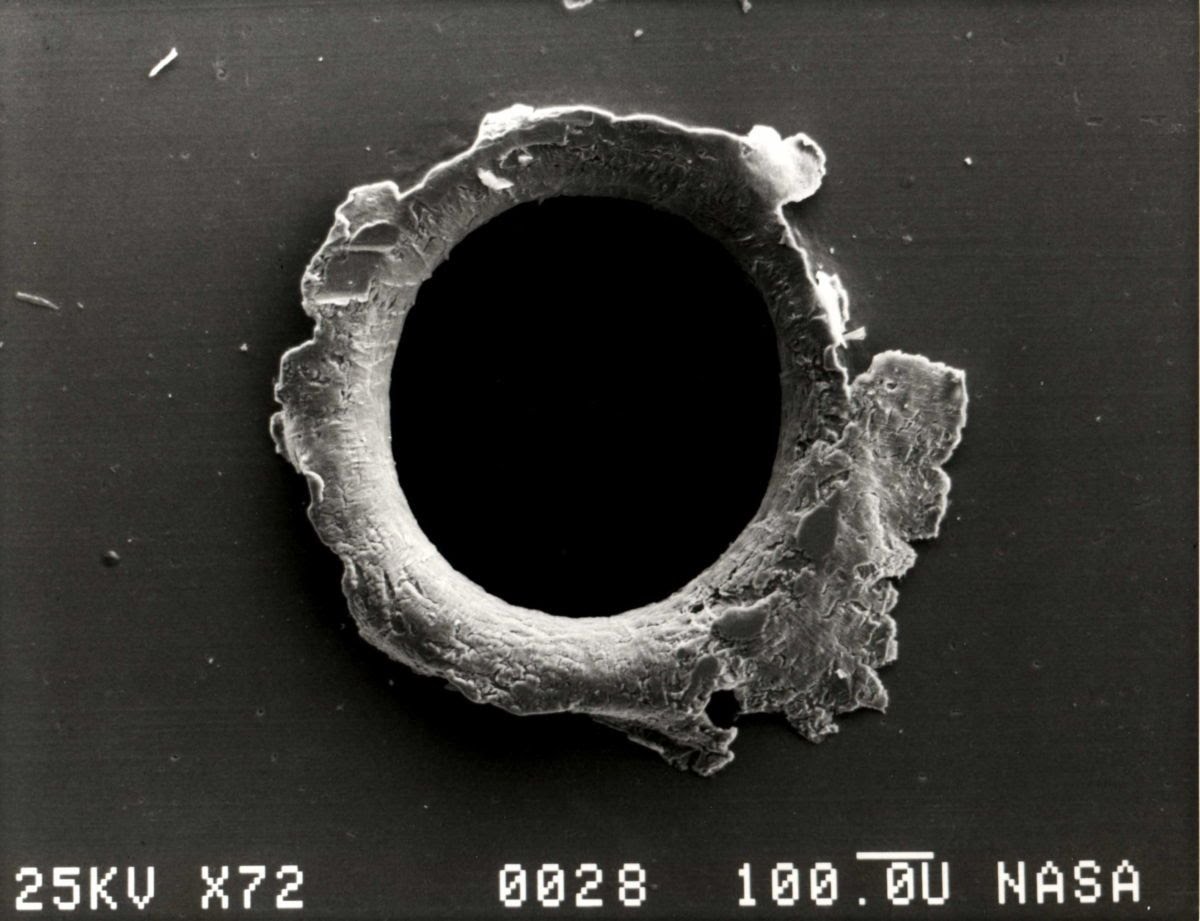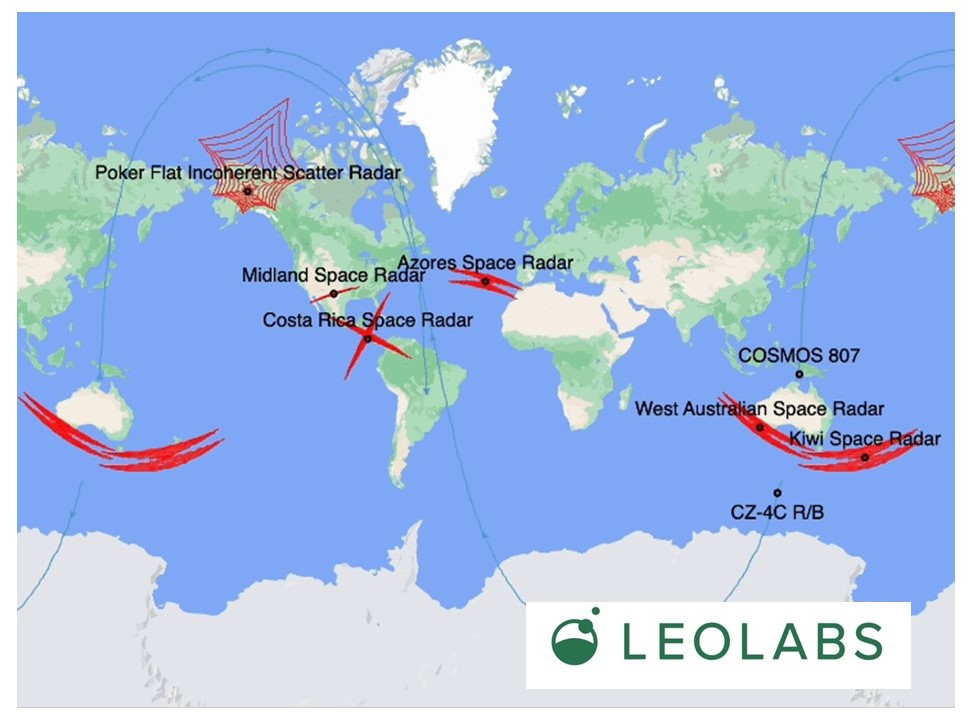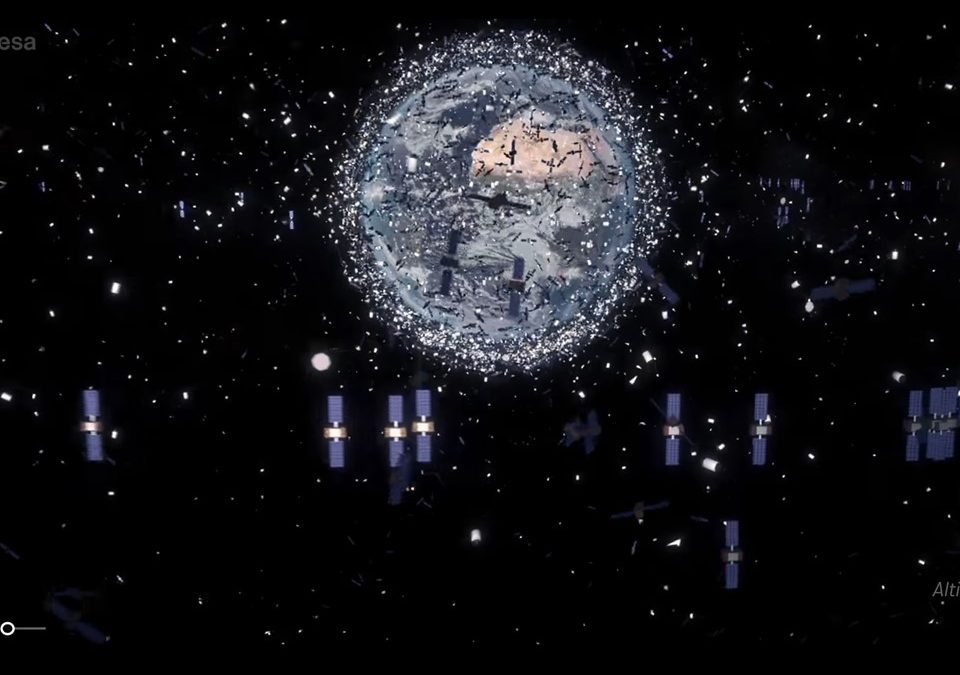Image: ESA

Debris Damage to Solar Max Satellite.
What’s New: Combining the threat of space weather with the threat of collisions causing more debris, causing more collisions, ultimately making space unusable (the Kessler syndrome),
Why It’s Important: Creating a dangerous debris layer at low earth orbit:
- Would make Low Earth Orbit unusable. LEO is where the International Space Station, China’s space station, and most communications, surface observation, and other satellites reside,
- Would likely make it too dangerous to transit LEO to put satellites and people in higher orbits.
- Could interfere with signals from existing satellites, like GPS/ GNSS, already in higher orbits
What Else to Know:
- There is already lots of debris in orbit. Form the European Space Agency
- 36,500 space debris objects greater than 10 cm (the only ones being tracked)
- 1,000,000 space debris objects from greater than 1 cm to 10 cm
- 130 million space debris objects from greater than 1 mm to 1 cm
- At speed all of these can damage or destroy a satellite or other space craft
- An estimated 19% of tracked debris is in Medium Earth Orbit where GPS and other GNSS reside
- THE TIME TO ACT IS NOW!
- Exercise great care and restraint putting additional objects in space. – Many countries are requiring new launches to have plans and the ability for objects to deorbit themselves when the are out of commission, A good start, but we wonder if it will be enough given the debris already in orbit and the tens of thousands of new objects planned and approved.
- Start cleaning up debris. – Only some very tentative, experimental efforts. Seems like more talk than anything.

Will Musk’s Starlink satellites lead to Kessler syndrome?
Space weather poses a tremendous threat to all satellites, knocking all computer systems offline. Is that a recipe for Kessler syndrome?
- Over the past 4 years, the number of active satellites in low-Earth orbit have increased by several thousand, with tens of thousands more planned in the coming years.
- The ultimate nightmare is that we’ll experience Kessler syndrome: where a runaway chain reaction of collisions litters low-Earth orbit with millions of pieces of debris, making new launches all but impossible.
- Currently, Starlink satellites avoid collisions through on-board AI software that tells them how to move. If that software gets knocked offline, such as by space weather, we have no protections against this catastrophe.
Over the course of the 2020s and 2030s, the night sky and the volume of space that surrounds the Earth are both poised to become very different than they’ve been for all of human history. As of 2019, all of humanity had launched an estimated total of between 8,000 and 9,000 satellites, where approximately 2,000 of them were still active back then, mostly in low-Earth orbit. As many companies now scramble to provide worldwide 5G coverage from space — led most prominently by Elon Musk’s and SpaceX’s Starlink, which has by far the most satellites — humanity is now beginning to enter the era of satellite mega-constellations.





On Sept 13, a derelict Soviet-era payload had a conjunction with a Chinese rocket body. The miss distance was 36 m (± 13 m) and the probability of collision was 1E-3 (i.e., 0.1% or 1/1,000). While we’ve seen more nail biting events, this one is notable — here’s why.
Cosmos 807 and CZ-4C had a combined hard body radius (HBR) of 5.6 m. This contributed to the relatively large probability of collision (PC) value.
If these two objects had collided, the number of resulting cataloged fragments would have likely been ~3,000. To put that into perspective, the 2021 Russian ASAT test resulted in ~1,800 total cataloged fragments over time.
In the last 20 months, we’ve observed 50 high-PC (i.e., PC > 1E-6) conjunctions involving Cosmos 807. While the majority were with operational payloads, 14 included fragments — six of which were from the fragment cloud generated after Russia’s 2021 ASAT test. CZ-4C, a 2,000 kg rocket body, was abandoned five years ago and it’s already been involved in 141 high-PC conjunctions, split almost equally between fragments and operational payloads.
How do we know all this?